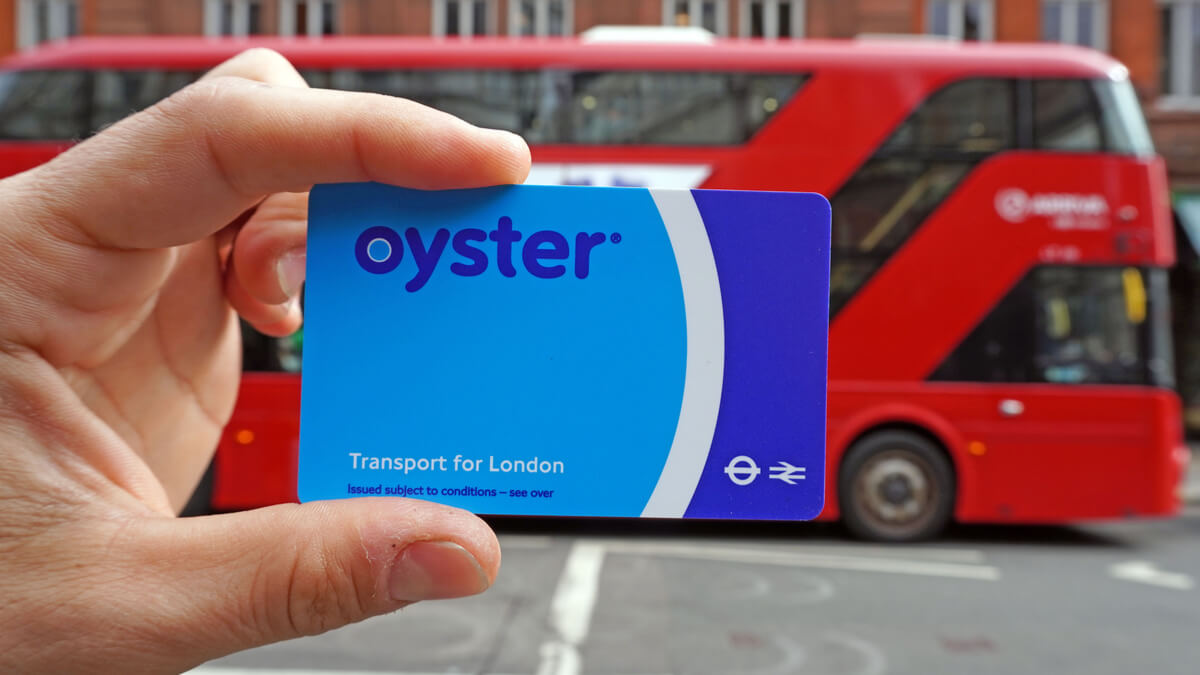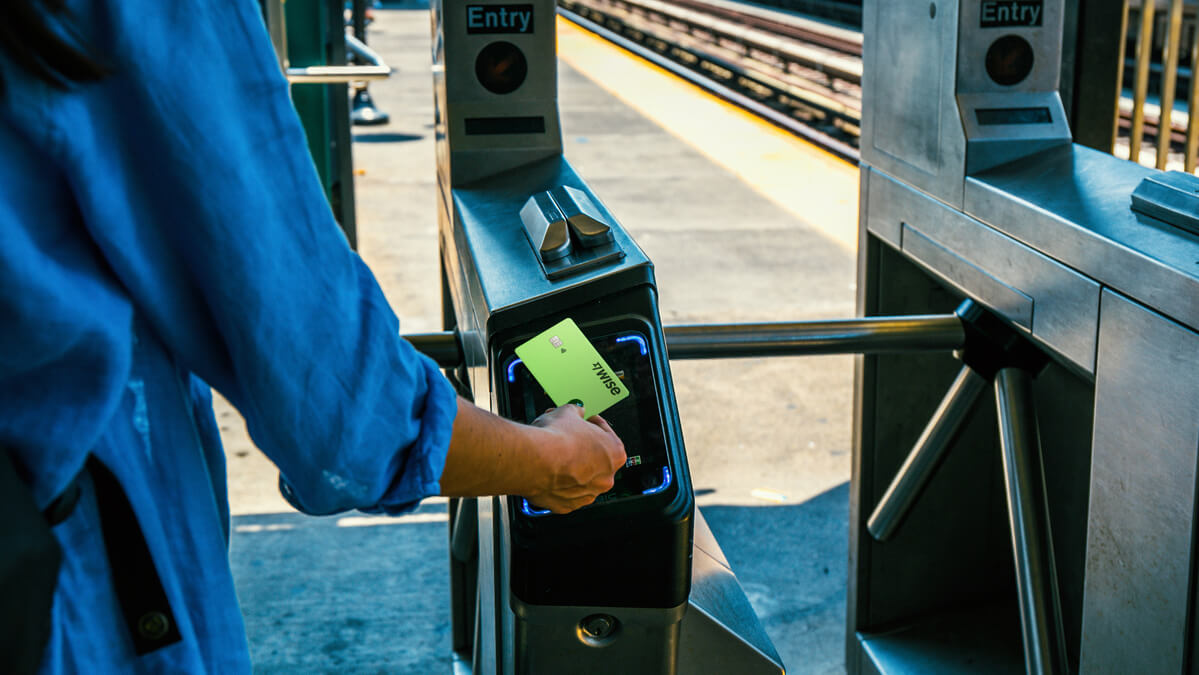Retiring in New Zealand from Singapore: Your 2025 Guide
Planning on retiring in New Zealand? This guide covers everything you need to know, from how to get a retirement visa to managing your finances.

If you’re visiting London and plan on using public transport while you’re there, you may be considering getting an Oyster card to get cheaper travel. The Oyster card is similar to the EZ-Link card, allowing you to tap in and out on trains, buses and when using the underground. However, it’s not the only way to access cheaper fares when in London - you can also simply tap in and out with a contactless card or mobile device¹.
Using a contactless card is more convenient than getting hold of an Oyster card. For many tourists, though, an Oyster card is the only option, as using their regular contactless card to tap in and out would come with high fees and a poor exchange rate.
The good news is that you can spend overseas without extra costs - including paying for travel while in the UK - if you choose to use a Wise card, instead. We’ll look at that in a little more detail later. First, let’s cover all you need to know about Oyster cards.
Oyster cards are issued by Transport for London (TFL)², and are used to pay for public transport in the Greater London area. You’ll be able to use your Oyster card on buses, underground services, trams, London overground trains, as well as some National Rail and river bus services.³
When you buy your Oyster card, you can choose a pay as you go plan and top it up with a prepayment, or buy and load a travelcard.
Travel cards are valid for selected areas and for a variety of durations from 7 days to a year. So for example, you may decide you need only to travel within the very centre of London during your 2 week trip there. In this case, you might select a card covering Zones 1 - 3, with a 2 week duration. Your travel card will then give you free transport in those areas - although you’ll have to pay more if you then choose to travel further afield.
If you’d rather a pay as you go card, you’ll need to top up your balance in advance of travel. You’ll be able to make single journeys, and benefit from payment caps- which means you’ll never pay more than a fixed amount per day or week, no matter how many trips you take.⁴
You’ll need to compare the costs of relying on the capped charges compared to buying a travel card, to see which will work best for you. Travel cards are typically used by commuters using the service daily, as an annual ticket may work out cheaper than paying day by day. Capped fees may work out better for travellers making frequent short journeys during their stay. More on the prices for travelling in London a little later.
To activate your card, simply tap it when you enter a train station, or get on a bus, tram or river ferry. There are card readers at the entrances to stations, and you’ll often need to have your Oyster card read to get access to a platform. Tap out when you arrive at your destination, to complete your journey.
You can buy an Oyster card online and have it delivered to you, or get a card in any underground train station, some overland stations, and many newsagents and stores around the city. Look for the Oyster symbol being displayed.
You’ll see on any public transport map that London is divided up into Zones with the very centre being Zone 1. The cost of your ticket depends on whether you use an Oyster card or travel card, whether you’re travelling at a peak time or not, and the Zones you pass through. If you’re making a single pay as you go journey, the price will be deducted from your Oyster card balance - but you’ll never pay more than the capped amount in a single day or week, no matter how many individual trips you take.
If you expect to make frequent journeys while you’re in London, you can check whether a travel card or capped fare will work better for you, using the comparison tool available on the TFL website⁵.

If you’re planning on travelling to the UK, you could save money and make life easier with a Wise account and linked debit card.
The Wise account is opened and operated online via the app, and lets you hold your money in 150+ different currencies, including Singapore dollars and British pounds. You can switch between currencies whenever you want, for a low fee. All conversion is done using the mid-market exchange rate with no hidden fees or nasty surprises.
You’ll get a linked contactless debit card, which you can use to spend while you’re in the UK with no additional costs. Simply top up your balance in pounds, and spend in stores, restaurants - or to tap in and out of public transport without the hassle of getting an Oyster card. You won’t pay any extra fees when you spend currencies you hold in the account, so you can use your borderless card to save money and make travel within London a breeze.
With a contactless payment function, the Wise card can definitely be used for all your Tube rides. Simply tap your card when entering you're good to go. Note that you'll be charged the full adult fare whenever you opt for contactless payment for any card, so do plan your journey to figure out which payment option is best for you.
Nonetheless, expect savings all-around when using the Wise card for your foreign currency transactions in London and beyond!
*Please see terms of use and product availability for your region or visit Wise fees and pricing for the most up to date pricing and fee information.
This publication is provided for general information purposes and does not constitute legal, tax or other professional advice from Wise Payments Limited or its subsidiaries and its affiliates, and it is not intended as a substitute for obtaining advice from a financial advisor or any other professional.
We make no representations, warranties or guarantees, whether expressed or implied, that the content in the publication is accurate, complete or up to date.

Planning on retiring in New Zealand? This guide covers everything you need to know, from how to get a retirement visa to managing your finances.

Thinking about retiring as an expat in Singapore? Our 2025 guide details visa requirements, living costs, and the pros and cons of retiring here.

Explore the UK High Potential Individual Visa. Learn about the eligibility, university list, and application process for graduates.

Planning your retirement in Japan from Singapore? Our 2025 guide covers complex visas, cost of living vs. SG, healthcare, and top cities to call home.

Thinking of retiring in Thailand? Learn more about visa requirements, cost of living, and how to get your finances ready for a comfortable retirement.

Here’s everything you need to know about moving to New Zealand from Singapore including cost of living, how to get a job, and more.